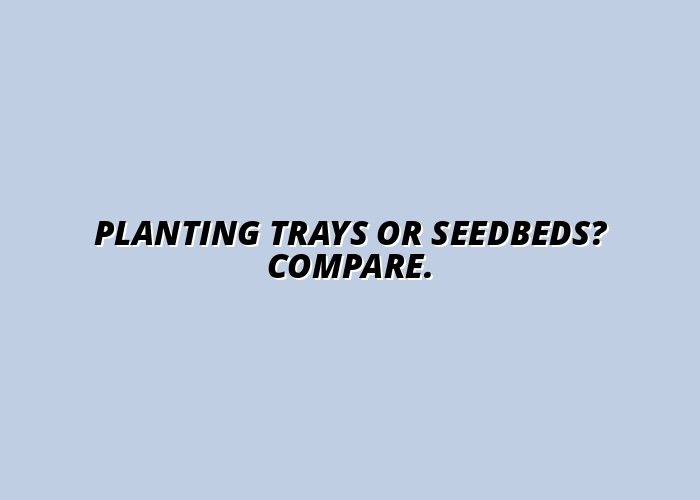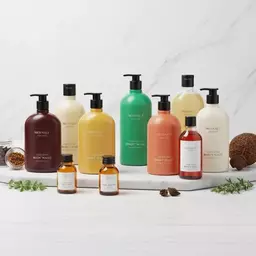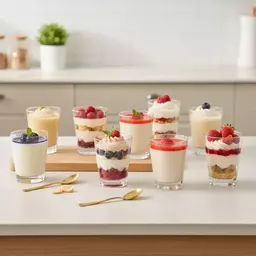Planting Trays: Key Advantages
- Better Organization & Monitoring
- Ideal for Limited Space (indoors)
- Easier Pest & Nutrient Control
- Reduced Transplant Shock (Soil Blocking)
- Moisture Retention in Dry Climates
Stay ahead with the latest packaging innovations and insights from Clara Voss and Innovative Packaging Solutions.
Posted on: 2025-11-09
By: Clara Voss
Choosing the right planting method can significantly impact your gardening success. As a gardener, understanding the nuances between planting trays and traditional seedbeds is essential. Dive into these key takeaways to enhance your gardening journey!
This visual highlights the key differences and considerations when choosing between planting trays and traditional seedbeds for your gardening needs.
Space: Available room for gardening.
Budget: Setup & maintenance costs.
Goals: Hobby vs. large-scale production.
Climate: Temperature, sunlight, humidity.
Soil Blocking: Less transplant shock, better airflow, space-saving.
Direct Sowing: For hardy crops, less maintenance, natural growth.
Hydroponics: No soil, faster growth, space-efficient (vertical).
When it comes to gardening, choosing the right planting method is crucial. That's where planting trays come into play! They offer a unique way to start seeds and nurture young plants, making them a popular choice among gardeners. But what exactly are planting trays, and how do they compare to traditional seedbeds? Let’s dive into it!
Planting trays are shallow containers designed for growing seedlings and young plants. They can be made of various materials, including plastic and biodegradable options. Generally, these trays allow for better organization of plants and are ideal for starting seeds indoors or in limited outdoor spaces. Many gardeners appreciate how planting trays enable them to monitor the growth of individual plants closely. A study on pelleted seed and covered trays for lettuce germination highlights the benefits of using trays for improved seedling success.
Each type serves different gardening needs, whether you’re starting dozens of plants or just a few. With our extensive selection at Innovative Packaging Solutions, we cater to various gardening preferences, ensuring you find the right fit!
When choosing planting trays, you’ll often encounter two main types: biodegradable and plastic. Biodegradable trays are great for gardeners who are environmentally conscious. They break down over time and enrich the soil! On the other hand, plastic trays are more durable and can be reused year after year. Each option has its own benefits and suits different gardening styles.
Traditional seedbeds are prepared plots of soil where seeds are sown directly into the ground. This method often allows for larger plants to grow together, benefiting from shared nutrients and moisture. Seedbeds are typically used for crops that require more space to spread out, creating a more natural growing environment.
Using these techniques can lead to healthy plants and bountiful harvests! However, managing seedbeds can be labor-intensive compared to using planting trays.
The success of traditional seedbeds heavily relies on soil quality. Ensuring the soil is rich in nutrients and well-drained is essential for healthy seedlings. Many gardeners incorporate organic matter or fertilizers to boost soil health, providing their plants with the best start possible. Research into improving soil quality for crop production emphasizes the importance of these practices.
Which method do you prefer for starting your garden? Let us know your thoughts:
Choosing between planting trays and traditional seedbeds can be a pivotal decision for gardeners. At Innovative Packaging Solutions, we understand how important it is to align your gardening method with your specific needs. To help you navigate this choice, let’s explore several key factors that can influence your decision.
When evaluating your options, consider these fundamental aspects:
These factors play a crucial role in determining whether planting trays or seedbeds suit your gardening style. For instance, limited space may make planting trays the better option, allowing for vertical stacking and efficient use of available area.
Your local climate can significantly impact plant growth. Consider how the following aspects affect your choice:
These environmental factors can guide you in selecting the right method. For example, if your area has a dry climate, using planting trays can help with moisture retention, ensuring your seedlings thrive.
It's essential to consider how you will manage plant nutrition and pests. Using trays often allows for easier monitoring of nutrient levels and pest control. Think about these strategies:
With planting trays, you might find it easier to implement targeted strategies to ensure optimal nutrition and pest control, which contributes to healthier plants in the long run.
Here are some frequently asked questions about planting methods:
While trays and seedbeds are popular, there are other methods worth considering. Each alternative has its own set of advantages!
Soil blocking is a method that creates small blocks of soil, allowing you to start seeds without the need for trays. Here are some benefits of soil blocking:
Direct sowing is another viable option, particularly for certain crops. Consider these scenarios:
Hydroponics is a fantastic method worth exploring, especially for those interested in innovative practices. Here’s what makes hydroponics appealing:
At Innovative Packaging Solutions, we believe in embracing a variety of gardening methods to suit individual needs. Whatever path you choose, these considerations will help you make an informed decision that aligns with your gardening goals!
Here is a quick recap of the important points discussed in the article:



 Choosing the right planting method can significantly impact your gardening success. As a gardener, u
Choosing the right planting method can significantly impact your gardening success. As a gardener, u
 As brands strive to resonate with an increasingly personalized consumer base, the packaging of produ
As brands strive to resonate with an increasingly personalized consumer base, the packaging of produ
 In the world of foodservice, presentation and convenience are key. By embracing microwave-safe desse
In the world of foodservice, presentation and convenience are key. By embracing microwave-safe desse